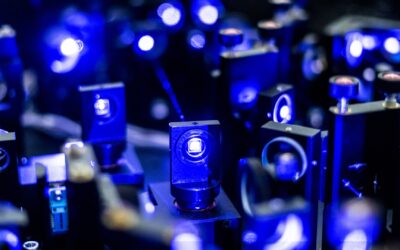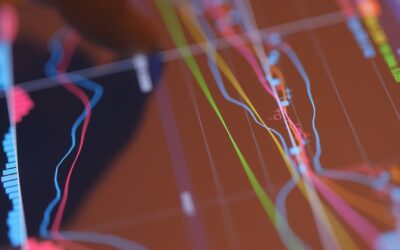Using Data for Good
The amount of data we create globally is growing at an exponential rate and, according to most data experts, is projected to reach 175 zetabytes by 2025. A zetabyte is a trillion gigabytes. To put that statistic into perspective, Deloitte compared it to “a stack of blu-ray discs that could reach the moon 23 times.” That’s a lot of data! But what does living in a data-driven world mean for business and for society? How can we leverage data to solve problems and create a better future for all?
The large amounts of data that organizations generate can contain valuable insights when analyzed properly. Unlocking these insights allows organizations to streamline processes, personalize the customer experience, inform decision making, mitigate risks and handle setbacks. And these benefits are having a big impact on our society.
Here are four ways data is being used for good.
Medical Breakthroughs
When it comes to healthcare, good data can save lives. Today’s medical professionals are using data to personalized treatments and make more informed decisions about people’s health. For patients, this translates to better care, preventive measures, and faster and more accurate diagnoses. At a business level, it can lower costs and simplify internal operations.
The COVID-19 pandemic has further highlighted the impacts of data on global health. Thanks to Big Data, public health officials have been able to make targeted and more informed decisions to prevent and mitigate outbreaks. Data also played a major role in the acceleration of COVID-19 vaccine development and distribution.
Using the Design Of Experiments (DOE) methodology, researchers were able to use data to reduce the number of clinical experiments required to bring the vaccine to market. Many experts predict that DOE is set to exponentially improve medical research timelines in the future.
Mobility
Big Data is also used in automotive technology and mobility to save lives on our roadways. Today, automakers are collecting telematic data to gather vehicle insights to build safer vehicles capable of preventing a car from starting until the driver’s seatbelt is fastened, checking blind spots, and braking in anticipation of slowing traffic. In public transit, data is collected via on-vehicle collision avoidance sensors. Additionally, data-driven developments in vehicle-to-vehicle communication and smart cities will further improve safety on our roads.
Data science has also completely reinvented the transportation industry, making our lives more convenient and giving rise to ride-hailing services like Uber and Lyft as well as food and grocery delivery services like DoorDash and Instacart. Fueled by data, these companies will continue to disrupt traditional industries. According to a report by Fortune Business Insights, the global ride sharing market size is expected to reach $243 billion by 2028.
Our Environment
Big Data can also be used to accelerate high-tech efforts to protect us from natural disasters, aid in disaster relief, and combat the ever-mounting climate crisis. In February, the United Nations Environmental Assembly stressed the importance of Big Data to support real-time monitoring of the environment, help consumers adopt more sustainable behavior, and create sustainable value chains. The UN is part of a cutting-edge digital transformation initiative in partnership with several Big Data partners called the “World Environment Situation Room,” a platform that leverages geographic, earth observation, and climate data to generate insights in near real-time.
In addition, Big Data tools are being used to combat deforestation and protect the 16,118 endangered species on the planet by helping to identify the species most at risk of extinction so conservationists can strategize, plan, and allocate funds appropriately to help protect the animals and plant life most in need.
Education
Data and analytics are also being used by educational institutions to improve teaching. Today, tools are available to track student understanding in real time, allowing teachers to tailor lesson plans and differentiate instruction based on how students are performing. Data is also playing a vital role in developing solutions for education inequalities driven by wealth disparity. According to American University in Washington, D.C., studies which analyze data are being conducted to uncovered important insights about achievement gaps among low-income students and improve student outcomes.
Large amounts of data can help provide insights on micro or nano trends that enhance or enrich individual experiences. So instead of having medical treatments or educational models that are a “one pill or one class fits all” approach, we can use this data to craft individualized treatments and educational programs for better outcomes.
Data scientists and analysts are roles with the most increasing demand across all industries, according to “The Future of Jobs” report published recently by the World Economic Forum. And for good reason. Data is being collected and analyzed all around us at an incredible rate. Often, we focus on the negative ways Big Data invades our privacy, puts our security at risk, and spreads misinformation. But, when applied in new and meaningful ways, Big Data can make a big impact to spark innovation and address the most pressing global issues facing our societies today.
Nicole Kampe is the Marketing Director for Automation Alley, Michigan’s Industry 4.0 knowledge center, and is responsible for overseeing the organization’s marketing strategy, digital experience, brand and image. Nicole is an experienced marketing, communications, and public relations professional with over 17 years of experience working in both journalism and corporate communications. Nicole earned a Bachelor of Arts in Journalism from Oakland University and worked previously at The Oakland Press, where she was honored on multiple occasions by the Society of Professional Journalists before joining Automation Alley in 2012.




